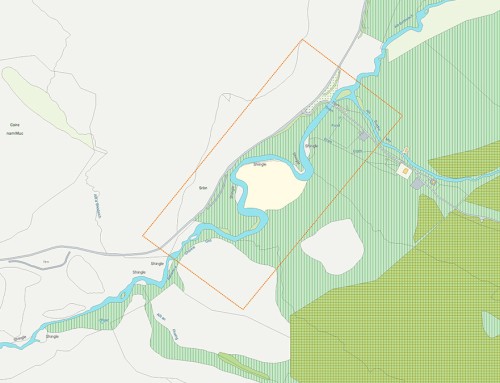What’s the one thing better than relaxing over a dinner of the finest fresh produce Scotland has to offer? It is of course tucking in to your feast knowing that you foraged everything you are eating yourself. Fresh and free, are the bywords of the recent renaissance in foraging and here are a few pointers to inspire you.
This is not a definitive guide, care should be taken especially with wild mushrooms, but dangers aside this can be the highlight of any trip to the wilds. For those who wish to take this a bit further, then foraging tuition and bushcraft courses are available.
Fishing is the obvious first thing that you may think of when the idea of living as a hunter gatherer first appeals, the oceans around Scotland however have so much more to offer. Limpets are common on rocky shorelines and can usually be freed with a swift kick from a hiking boot. Pop them on your barbecue grill flesh side up with a spoonful of butter and some garlic. Described by none other than Hugh Fearnley Whittingstall as “fishy flavoured pencil erasers” – try them at your peril!

Cockles & mussels are abundant in the right locations (if you are lucky a local may share their favourite gathering spot with you). Serve, simply steamed and eaten straight from the shells or adding to a pan of sauteed butter, onions, garlic, splash of white wine and a little cream. Pop the lid on, steaming the shells until they open (a few minutes).
These sea food loving continentals also seem to have a thing about our razorfish. Long neglected in this country partially due to their elusive nature, discerning diners in the Mediterranean have been seeking this delicacy for years. Evidence of shells on the beach is a good start and low tide is a must. Look for the little holes and bubbles will pop up if you have found one. Pouring salt down the hole will encourage it to pop up and at this point put your shovel in and trial and error and lot of wiggling and the rewards will be yours.
Beach fishing and casting a line from the local harbour can be very productive. Sea trout, mackerel, crabs and flounders are amongst the most common catches.
It’s not all savoury down the beach, carrageen is a pale looking seaweed that makes an amazing set-yoghurt style dessert. A perfect accompaniment would be the acid tarty flavour of sea buckthorn.
There are many ways in which the urban dweller can begin to connect with the countryside, but collecting mushrooms must be one of the easiest. Chanterelles for example are prized for their distinctive spicy flavour (a smell of apricots) and can be found on many forest walks in the Highlands. Most foraged foods have a low calorific value, so being completely self-sufficient and living off the land takes a considerable effort, however the bounty available to harvest throughout the year offers a tantalising taste of traditional living and makes an eco-friendly change to supermarket fair.

Nettles make for a delicious soup, cordial and even healthy eco-friendly beers. We recommend gloves for collecting these prickly customers and if stung, look nearby for dock leaves. Rub the sting and hey presto! A natural healing remedy!
Berries and fruits are in abundance and can be used for many recipes. Raspberries, cherries, blueberries, blackberries, red and blackcurrants, rhubarb, sloe berries and juniper berries to name but a few.
It’s probably not worth packing your specially trained pig on trips up north, as unfortunately truffles are rarely found up here. Instead, for the finishing touches to a gourmet feast, search for wild garlic, rosehips, bog myrtle and mint. Wild flowers make a colourful addition to any salad.

And to drink? Some locally made gin can be made more delicious with the addition of sloe berries and crushed blueberries. Fill your hip flask, get your wellies on and grab your basket. Dinner is waiting for you.






